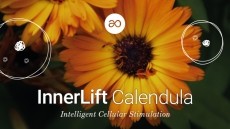Post-pandemic preservatives: The end of the ‘free-from’ beauty era?
![Searches for 'paraben-free' peaked in July 2020 and in 2022 consumers are now increasingly focused on safety and hygiene [Getty Images]](/var/wrbm_gb_food_pharma/storage/images/_aliases/wrbm_large/publications/cosmetics/cosmeticsdesign-europe.com/article/2022/08/08/wgsn-preservatives-report-says-safety-and-hygiene-now-consumer-focus-post-covid/15667323-2-eng-GB/WGSN-preservatives-report-says-safety-and-hygiene-now-consumer-focus-post-COVID.jpg)
In its intelligence report The Future of Preservatives, beauty forecaster WGSN outlined the “evolving world of parabens and preservatives” in the beauty industry, highlighting opportunities and possibilities for brands moving forward.
The report said pre-pandemic, there had been perceived dangers around preservatives that “overshadowed” the potential of these ingredients. “However, hygiene and financial pressures are causing consumers to reconsider,” WGSN wrote.
Mintel previously predicted the 2019 EU guidance document for making cosmetic claims would contribute to this shift as brands were prompted away from free-from claims.
Paraben fears and rising preservatives scrutiny
Back in 2004, UK researchers published a study in Applied Toxicology outlining findings of high concentrations of intact parabens in breast tumours. And whilst the study just identified the presence of these parabens, rather than linked this presence to the cancer itself, the study triggered a shift in public opinion and increased the scrutiny of parabens, WGSN said.
Today, some parabens had now been banned in the EU and the ASEAN Cosmetic Committee (ACC), such as isopropylparaben, isobutylparaben, phenylparaben, benzylparaben and pentylparaben, along with some bans also introduced on alternative preservatives such as zinc pyrithione and sodium hydroxymethylgylcinate.
And looking at social media trends from late 2021 and early 2022, WGSN said noise around DNDM hydantoin, an antimicrobial formaldehyde releaser preservative, was garnering plenty of negative attention, with TikTok videos referencing hair loss and scalp irritation class action lawsuits. Whilst this ingredient had been classified safe by the EU, CIR and Safe Cosmetics Australia – as had many preservatives under Annex V of the EU Cosmetic Products Regulation – WGSN said that because social media users were now regarded more trustworthy than brand product information, beauty brands had to take note.
Communication around ingredient safety ‘must evolve’
“Consumers are researching the ingredients in products. Searches for ‘DMDM hydantoin safety’ had 23,900% YoY growth, while searches for ‘formaldehyde toxic’ increased by 21.8% YoY, per a June 2021 Deciem report,” it wrote in its report.
“Consumer scepticism is high and communication strategies around ingredient safety must evolve and educate to inspire trust,” WGSN said.
Many parabens and preservatives remained legally authorised and research into these ingredients was ongoing. Chemists and formulators had also become more vocal about the safety of parabens as they started to be replaced by “less scientifically established preservatives”, WGSN said. Online searches for ‘paraben free’ had also peaked in July 2020.
Moving forward, the beauty forecaster said consumer thinking would likely continue its shift, away from paraben and preservative fears, as more scientific data was established, and marketing offerings and information changed. Bodies such as the EU were also discouraging marketing products as ‘free-from’ authorised ingredients and “science-first beauty experts and influencers” debunking misinformation were also growing in popularity, according to the report.
Post-pandemic shift towards ‘science-backed beauty’
And all of this aligned with shifting priorities amongst beauty consumers in the light of the COVID-19 crisis, WGSN said. “The pandemic gave rise to a renewed focus on hygiene and product safety, prompting a shift in attitudes in preservatives’ favour, aligned with a rise in science-backed beauty.”
And this trend had been identified early in the pandemic, back in June 2020 by Jenni Middleton, director of beauty at WGSN at the time. Middleton said safety and hygiene concerns had been catapulted to the fore because of COVID-19, increasing the relevance of the likes of blockchain and biotech for the beauty industry.
![Warmer earth tones with pops of electrifying colour will be in come Autumn 2024 as consumers look to balance wellbeing and self-expression [Getty Images]](/var/wrbm_gb_food_pharma/storage/images/_aliases/wrbm_medium/publications/cosmetics/cosmeticsdesign-europe.com/article/2022/12/13/wgsn-beauty-colour-forecast-2024-2025-highlights-importance-of-bright-expressive-colours/16021472-1-eng-GB/WGSN-beauty-colour-forecast-2024-2025-highlights-importance-of-bright-expressive-colours.jpg)
![Significant ongoing economic headwinds are creating difficulties for many beauty companies worldwide, though plenty continue to invest and design out circular business models [Getty Images]](/var/wrbm_gb_food_pharma/storage/images/_aliases/wrbm_medium/publications/cosmetics/cosmeticsdesign-europe.com/article/2022/10/31/sustainable-beauty-challenges-tough-amidst-2022-economic-crisis-says-ecovia-intelligence/15900578-4-eng-GB/Sustainable-beauty-challenges-tough-amidst-2022-economic-crisis-says-Ecovia-Intelligence.jpg)
![There have been plenty of advances made in solvent-based and sorbent-based microextraction techniques, with green principles now an important focus [Getty Images]](/var/wrbm_gb_food_pharma/storage/images/_aliases/wrbm_medium/publications/cosmetics/cosmeticsdesign-europe.com/headlines/formulation-science/green-chemistry-in-microextraction-for-cosmetics-testing-promising-finds-review/15694644-1-eng-GB/Green-chemistry-in-microextraction-for-cosmetics-testing-promising-finds-review.jpg)
![Multifunctional ingredients offer strong promise in not only protecting formulas but boosting properties within, including texture and actives, according to the supplier [Getty Images]](/var/wrbm_gb_food_pharma/storage/images/_aliases/wrbm_medium/publications/cosmetics/cosmeticsdesign-europe.com/article/2022/07/26/cosmetic-formulation-promise-in-multifunctionals-for-protection-sensory-and-active-boost-says-symrise/15630039-1-eng-GB/Cosmetic-formulation-promise-in-multifunctionals-for-protection-sensory-and-active-boost-says-Symrise.jpg)


















